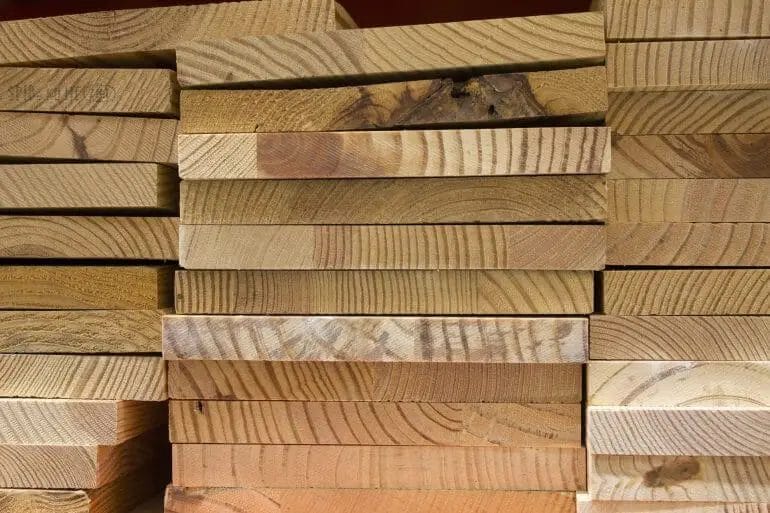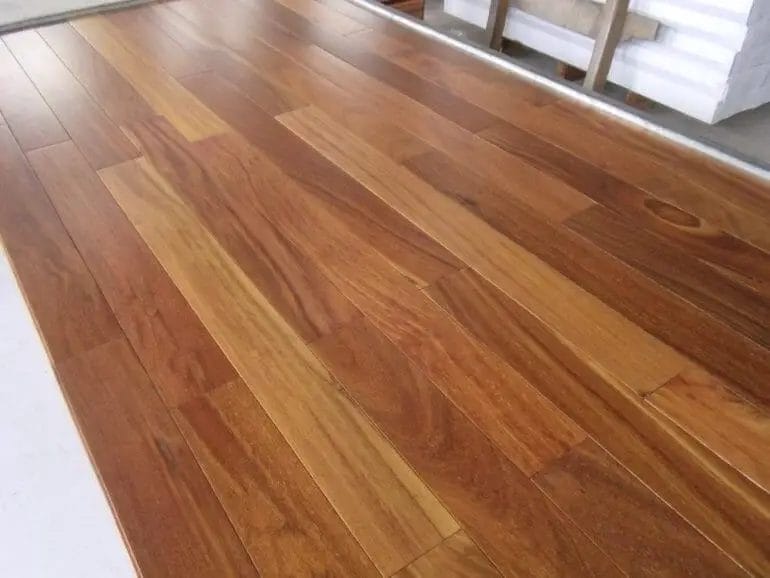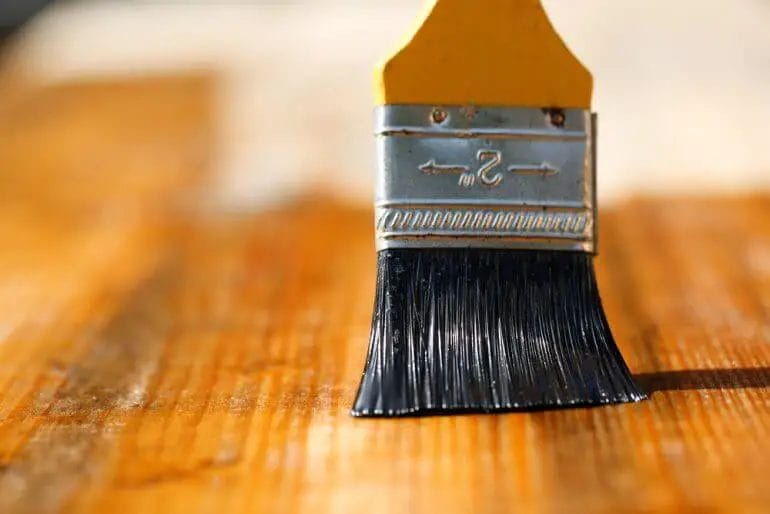Want to protect your wooden structures from termite damage? Look no further! Discover how to termite-proof wood and ensure long-lasting durability. With the right preventive measures, you can safeguard your investments and avoid costly repairs. From treating the wood to implementing effective barriers, we’ll show you how to keep those pesky termites at bay. Don’t let these tiny pests compromise the integrity of your wooden assets. Take proactive steps today to termite-proof your wood and enjoy peace of mind for years to come.

Essential Steps for Protecting Wood from Termites
Wood is a popular material used in construction and various other industries, but it is also highly susceptible to termite damage. Termites can cause significant damage to wooden structures, leading to expensive repairs and potential safety hazards. To avoid these issues, it is important to take preventative measures to protect wood from termites. In this section, we will discuss some essential steps you can take to safeguard your wood against these destructive pests.

1. Use Treated or Naturally Resistant Wood
One of the most effective ways to protect wood from termites is to use treated or naturally resistant wood. Treated wood is impregnated with chemicals that repel termites, making it less appealing and vulnerable to infestation. Pressure-treated lumber is a common option for outdoor projects, as it is infused with preservatives that deter termites and other pests. Additionally, there are certain types of wood, such as cedar and redwood, that naturally have properties that make them resistant to termite damage.
2. Apply Protective Coatings
Another step you can take to prevent termite damage is to apply protective coatings to the wood. These coatings act as a barrier, making it difficult for termites to penetrate and access the wood. There are various types of coatings available, such as termite-resistant sealants and paints that contain chemicals to repel termites. It is important to apply these coatings to all exposed surfaces of the wood, including the ends, to ensure complete protection.
3. Maintain Proper Moisture Levels
Termites thrive in moist environments, so keeping wood dry is crucial in preventing infestations. Ensure proper drainage around your home or structure by fixing any leaks or water seepage issues. It is also important to control humidity levels indoors, especially in areas where wood is present. Use dehumidifiers or ventilation systems to reduce moisture buildup and create an unfavorable environment for termites.
4. Remove Wood-to-Soil Contact
Direct contact between wood and soil provides an easy access point for termites. To minimize the risk of infestation, it is important to remove any wood-to-soil contact. Make sure that wooden structures, such as decks and fences, have a proper foundation and are elevated above the ground. Additionally, avoid stacking firewood directly on the ground and ensure it is stored away from your home or building.
5. Regular Inspections
Regular inspections are essential in detecting termite activity early on and preventing severe damage. Inspect wooden structures, furniture, and other susceptible areas on a routine basis. Look for signs of termite infestation, such as mud tubes, discarded wings, or hollow-sounding wood. If you suspect termite activity, contact a professional termite control company for further evaluation and treatment.
6. Professional Termite Treatment
If you live in an area prone to termite infestations or have had previous termite issues, it may be wise to invest in professional termite treatment. A licensed pest control professional can perform preventive treatments, such as soil treatments or termite baiting systems, to create a barrier of protection around your property. Professional treatments can provide long-lasting termite control and give you peace of mind.
In summary, protecting wood from termites requires proactive measures to prevent infestations and minimize the risk of damage. By using treated or naturally resistant wood, applying protective coatings, maintaining proper moisture levels, removing wood-to-soil contact, conducting regular inspections, and considering professional termite treatment, you can significantly reduce the chances of termite-related problems. Remember, early detection and prevention are key in safeguarding your wooden structures and preserving their longevity.

Best Practices to Prevent Termite Damage on Wood
Wood is a popular material used in construction and furniture-making due to its durability and aesthetic appeal. However, one major threat to the integrity of wood is termite infestation. Termites are destructive pests that feed on cellulose, which is the main component of wood. If left unchecked, a termite infestation can cause significant damage to wooden structures. To protect your wood from termite damage, it is essential to follow these best practices:
1. Regular Inspections
Regular inspections are crucial for early detection and prevention of termite damage. Inspect wooden structures, such as buildings, furniture, and fences, for any signs of termites or termite activity. Look for mud tubes, discarded wings, and hollow-sounding wood, as these are indicators of termite presence. Conduct inspections at least once a year, and after any significant moisture events, such as heavy rain or flooding.
2. Maintain Proper Moisture Levels
Termites thrive in moist environments, so it is important to control moisture levels around wooden structures. Fix any leaks or drainage issues that may lead to water accumulation near your wood. Ensure proper ventilation in areas where wood is stored or used, as it helps to prevent moisture buildup. Avoid placing wooden materials directly on the ground, as soil moisture can attract termites.
3. Create Physical Barriers
Installing physical barriers is an effective preventive measure against termite infestation. Use termite-resistant materials, such as pressure-treated wood or naturally resistant woods like cedar or redwood, for construction projects. Create a gap between soil and wooden structures using concrete foundations or metal termite shields. This barrier prevents termites from accessing the wood and reduces the risk of damage.
4. Remove Wood-to-Soil Contact
Eliminate any direct contact between wood and soil, as it provides a pathway for termites to access your wood. Regularly inspect areas where wood comes into contact with the ground, such as fence posts, decks, and exterior wood siding. Install metal or concrete supports to elevate wood above the soil level. By creating a barrier, you can effectively reduce the chances of termites infesting your wood.
5. Use Chemical Treatments
Chemical treatments can be an additional line of defense against termite damage. Apply termiticides to the soil around the foundation of your wooden structures to create a protective barrier. These chemicals repel or kill termites, preventing them from reaching your wood. It is important to follow the instructions provided by the manufacturer and consult with a professional for proper application.
6. Seek Professional Assistance
If you suspect or have confirmed a termite infestation, it is crucial to seek professional assistance. Pest control experts have the knowledge, experience, and tools to effectively eliminate termites and prevent further damage. They can conduct thorough inspections, provide appropriate treatment options, and offer advice on long-term termite prevention strategies.
In summary, preventing termite damage on wood requires proactive measures and regular inspections. By maintaining proper moisture levels, creating physical barriers, removing wood-to-soil contact, using chemical treatments, and seeking professional assistance when needed, you can safeguard your wood from the destructive effects of termites. Implementing these best practices will help ensure the longevity and integrity of your wooden structures.

Expert Advice on Making Wood Termite-Resistant
Wood is a popular building material known for its natural beauty and versatility. However, it is also susceptible to damage from various pests, including termites. Termites can cause significant damage to wooden structures, leading to expensive repairs and replacements. To protect your wood from termite infestations, it is essential to take preventive measures. In this section, we will provide expert advice on making wood termite-resistant.
1. Use Termite-Resistant Wood:
One of the most effective ways to prevent termite damage is to use termite-resistant wood. Certain types of wood, such as cedar and redwood, are naturally resistant to termites due to their natural oils and resins. These woods have a strong aroma that repels termites and makes them less likely to infest. When choosing wood for your construction projects, opt for these types of termite-resistant wood to minimize the risk of termite damage.
2. Apply Wood Preservatives:
Wood preservatives are chemical formulations that provide protection against termites and other wood-destroying organisms. These preservatives can be applied to the wood surface or injected into the wood to create a barrier against termites. When using wood preservatives, it is crucial to follow the manufacturer’s instructions and safety guidelines to ensure effective and safe application.
3. Maintain Proper Moisture Levels:
Termites thrive in moist environments, as they require moisture to survive and reproduce. By controlling the moisture levels in and around your wooden structures, you can prevent termite infestations. Ensure proper drainage around the foundation of your building, fix any leaks or water damages promptly, and monitor humidity levels inside your home. By keeping the wood dry, you can minimize the attractiveness of your wooden structures to termites.
4. Create Physical Barriers:
Physical barriers can be installed to prevent termites from accessing the wood. These barriers can be made of materials such as metal or concrete and should be installed during the construction phase. The physical barriers act as a deterrent, forcing the termites to find alternative routes and reducing the risk of infestation.
5. Regular Inspections:
Regular inspections are crucial in detecting termite infestations at an early stage. Hiring a professional pest control company to conduct regular inspections can help identify any signs of termite activity and take appropriate measures to prevent further damage. Early detection and intervention can save you from expensive repairs and potential structural damage.
6. Remove Wood-to-Soil Contact:
Direct contact between wood and soil provides easy access for termites. Avoid placing wooden structures in direct contact with the ground, as this increases the likelihood of termite infestation. Use appropriate materials to create a barrier between the wood and soil, such as concrete or metal pedestals.
7. Treat Existing Infestations:
If you suspect or discover a termite infestation in your wooden structures, it is essential to take immediate action. Contact a professional pest control company to assess the extent of the infestation and provide treatment options. Treating existing infestations promptly can prevent further damage and protect your wood from future termite attacks.
8. Educate Yourself:
Stay informed about termite prevention and treatment methods. Educate yourself about the signs of termite infestation, common risk areas, and preventive measures. By understanding the behavior and habits of termites, you can take proactive steps to protect your wood from these destructive pests.
In summary, protecting wood from termite damage requires a combination of preventive measures and proactive actions. By following these expert tips, you can make your wooden structures more termite-resistant and minimize the risk of costly infestations. Remember to consult with professionals for guidance and assistance in implementing the most effective termite prevention strategies.
Key Strategies for Safeguarding Wood Against Termites
Termites are relentless pests that can cause significant damage to wooden structures if not properly addressed. Whether you have a wooden deck, furniture, or a home built with wood, it is essential to take proactive measures to protect against termite infestations. In this section, we will explore some key strategies that can help safeguard wood against termites.
1. Regular Inspections
Regular inspections are crucial in identifying termite activity at an early stage. It is recommended to inspect wooden structures, including furniture, decks, and fences, at least once a year. Look for signs of termite presence such as mud tubes, discarded wings, or hollow-sounding wood. If any signs of termites are detected, it is important to take immediate action.
2. Moisture Control
Termites thrive in moist environments, making it essential to control moisture levels around wooden structures. Ensure proper drainage around the foundation of your home or any wooden structures. Repair any leaky pipes or faucets, and keep gutters free from clogs to prevent water buildup. Additionally, avoid direct wood-to-soil contact by using concrete or metal barriers.
3. Termite-Resistant Wood
Choosing termite-resistant wood can be an effective preventive measure. Certain types of wood, such as redwood, cedar, and pressure-treated wood, have natural properties that make them less appealing to termites. Consider using these types of wood when building or replacing wooden structures.
4. Chemical Treatments
Chemical treatments can provide an additional layer of protection against termites. There are various options available, including liquid termiticides and termite baits. Liquid termiticides are applied to the soil around wooden structures and create a barrier that repels or kills termites. Termite baits, on the other hand, are placed in strategic locations and are designed to attract termites, ultimately eliminating the entire colony.
5. Professional Pest Control
Engaging the services of a professional pest control company is highly recommended, especially in areas prone to termite infestations. Pest control experts have the knowledge and expertise to effectively assess the situation, implement appropriate treatments, and provide long-term solutions. Regular inspections and preventive treatments from professionals can significantly reduce the risk of termite damage.
In summary, protecting wood against termites requires a combination of strategies. Regular inspections, moisture control, the use of termite-resistant wood, chemical treatments, and professional pest control are key measures that can help safeguard wood from termite infestations. By implementing these strategies, you can ensure the longevity and durability of your wooden structures, preventing costly repairs and potential structural damage caused by termites.
FAQs
1. How can I termite-proof wood?
To termite-proof wood, you can take the following measures:
- Apply a termite-resistant coating or paint to the wood surface.
- Use pressure-treated or naturally resistant woods like redwood or cedar.
- Keep wood away from direct contact with soil or water sources.
- Regularly inspect and treat wood with termite repellents or chemicals.
Conclusion
In conclusion, knowing how to termite proof wood is essential in protecting your property and belongings. By following the right preventative measures and using effective treatments, you can significantly reduce the risk of termite infestation. Regular inspections and maintenance are crucial to identifying and addressing any signs of termites promptly. Additionally, sealing cracks and gaps, applying protective coatings, and using termite-resistant materials can help fortify your wood against these destructive pests. Remember, prevention is the key to minimizing the damage caused by termites and prolonging the lifespan of your wooden structures.